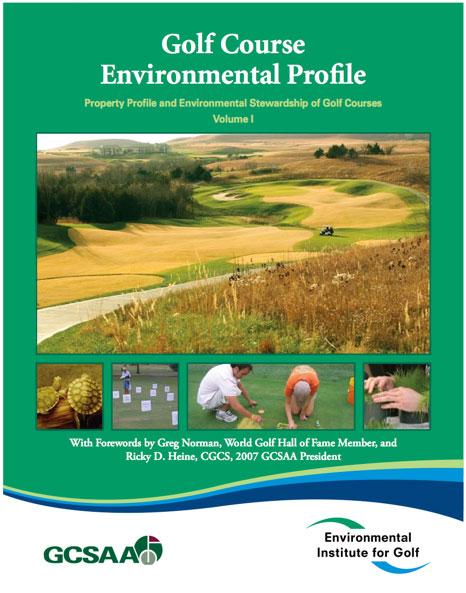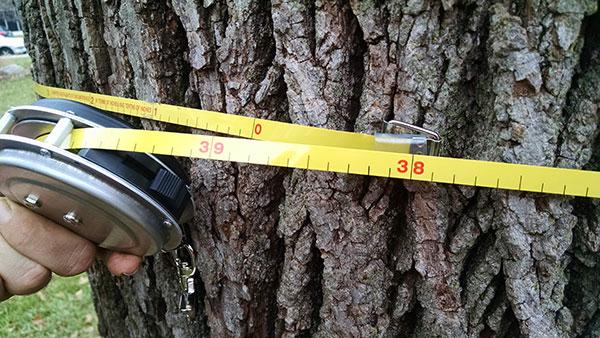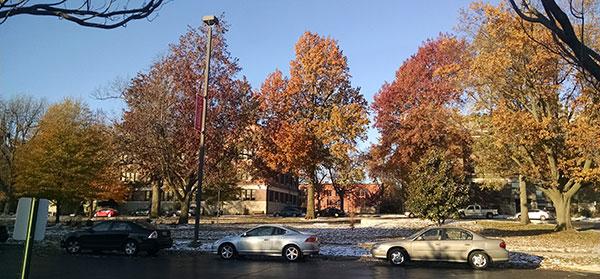Market your trees to market your course...
 I recently read a summary of the Property Profile and Environmental Stewardship of Golf Courses, published by the Environmental Institute for Golf, an offshoot of GCSAA. This document puts golf courses in a deservedly positive environmental light, particularly with regard to non-turf areas -- which many golf courses have increased in size (44% of surveyed courses since 1996).
I recently read a summary of the Property Profile and Environmental Stewardship of Golf Courses, published by the Environmental Institute for Golf, an offshoot of GCSAA. This document puts golf courses in a deservedly positive environmental light, particularly with regard to non-turf areas -- which many golf courses have increased in size (44% of surveyed courses since 1996).
Forest and woodlands and something more
In this profile summary, forest and woodlands represent 137,768 acres. While this number is impressive, what actual value do these areas bring to a golf course in the eyes of golfers or the general public? There must be a way to articulate the value that these non-turf areas, and trees in general, give to a course. By defining value for course stakeholders, the superintendent and staff define their contribution to the courses success, and their influence in the management of the course.
Creating value
As an ISA Certified Arborist and self-avowed tree hugger, I believe trees and woodland have significant value. Previously as a golf course worker, I knew that trees and woodland affect play, add to the aesthetic of the course, and provide environmental/ecologic benefits. They can also influence the maintenance needs of the course. It is clear that in most cases trees add value to a course. How do you assess how much value?
Assessing Value
When discussing value it is important to measure it in terms that are appreciated by your stakeholders. Treehuggers appreciate birds and leaves, nature lovers appreciate beauty, golfers appreciate a well-placed obstacle, but budget people appreciate dollars. This is where we have had a hard time assessing value. If you want to demonstrate the ability of trees and woodlands to further the financial objectives of your course, you have to talk in dollars. And, not in terms of installation or maintenance costs, but in what financial benefit they bring to your course monetarily.
i-Tree
 Here at Drury University we recently completed a sample inventory of 29 trees (Burnham Circle - a clearly defined circle drive on campus). We ID'd genus and species, took diameter breast height (dbh) measurements, assessed the leaf canopy and general health, and then downloaded this information into i-Tree Streets.
Here at Drury University we recently completed a sample inventory of 29 trees (Burnham Circle - a clearly defined circle drive on campus). We ID'd genus and species, took diameter breast height (dbh) measurements, assessed the leaf canopy and general health, and then downloaded this information into i-Tree Streets.
i-Tree is an analysis program created by the USDA Forest Service with significant input from field experts and Davey Tree. I was able to do all this data entry from my Android phone in the field, then upload that information to my desktop computer. The data is crunched by the software using factual, unbiased information from your geographic area and accepted industry information. I-Tree also offers several variations that are tailored to different tree analysis needs. It is free to download.

Burnham Circle on the Drury University campus
Results and Benefit
The results proved quite noteworthy. These 29 trees ranged from newly planted 1? to 41? dbh, and included 13 different genus/species. In aggregate these trees provide $1,815 in annual benefits broken down into the following categories by increasing dollar amount:
- CO2 sequestration-$29,
- air quality improvement- $66,
- energy savings- $200,
- stormwater mitigation- $628,
- property value increase- $891.
The replacement value for these trees was determined to be $40,582 (undervalued, in my opinion, because a 38"dbh American Basswood is priceless!). I estimate that these trees represent roughly 1/30th of the trees on campus. Do the math and it adds up to a lot of money.
With this quantitative information in hand, I hope to increase my bargaining power for establishing the Grounds budget on campus. At the very least I can objectively articulate the value that Grounds brings to the University. This information could also be conveyed to affiliated organizations or local government for crediting the ecological and property value benefit golf courses can bring to an area.
There is something for every stakeholder in analyzing the value of your trees.



0 Comments
Recommended Comments
There are no comments to display.